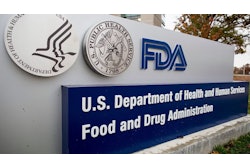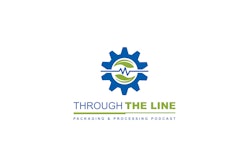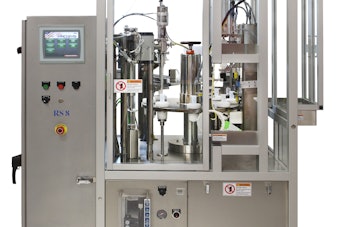The HDA Traceability Seminar opened with a packed house and a key message running through presentations: the DSCSA EDDS guidance that FDA dropped Friday, Aug. 25, is not to be looked at as simply enforcement discretion but as a stabilization period through Nov 27, 2024.
As FDA's Leigh Verbois said in her co-presentation with Connie Jung, “Let me just be really clear, we want to make sure that this time is used to implement, troubleshoot, and mature systems for trading partners and processes while supporting the continued availability of products. With the compliance policies in this new guidance, we want to focus on November 2023 and beyond.”
Jung, FDA senior advisor for policy, reiterated the message. “This does not mean to stop doing anything. We want you to continue to implement, we expect you to continue to implement because if you don't, you will never get there,” she said. “Our expectation is that we want you to test and exchange electronic data before the date. This is what we were saying about November 2023—now, it's before November 2024, you need to be exchanging that data electronically.”
While some may still view this as a pause, Tish Pahl, principal, Olsson Frank Weeda Terman Matz PC, highlighted a section of the guidance which is actually underlined in the EDDS guidance:
"This guidance is not intended to provide, and should not be viewed as providing, a justification for delaying efforts by trading partners to implement the enhanced drug distribution security requirements under section 582(g)(1) of the FD&C Act. FDA strongly urges trading partners to continue their efforts to implement necessary measures to satisfy these enhanced drug distribution security requirements."
As Pahl noted, "FDA doesn't use typographical arts in the way that others might... so the fact that they underlined this is actually really unusual and very important." She suggested that when dealing with companies that are calling up and canceling their contracts, show them this verbiage.
Because of the cascading nature of an interoperable electronic system, a delay in manufacturer efforts leads to delays exchanging data with distributors/wholesalers, and then another layer of delays with dispensers. Some of those downstream trading partners expressed frustration that they’re left waiting for manufacturers to begin testing.
Industry response
How a manufacturer uses the extra time depends on how ready they were before Friday’s guidance announcement. As LSPedia’s Riya Cao explained, “Stabilization is for companies who have already gone live, so I don't know how many of you are qualified to go into stabilization. I think a lot of people are still implementing, and then more are not even implementing yet. We’re very concerned about companies lagging behind… companies are just reading that discretion headline and making the decision not to work on this for another year. For those of you that are fortunate enough to go into stabilization, there's so much work ahead. You have to really get into the daily operations to uncover the scenarios you never thought about. Every day we're learning new things.”
Speaking on behalf of manufacturers at an onboarding panel were Blair Korman, sr. director, digital identification & traceability at Johnson & Johnson Supply Chain, and David Mason, supply chain compliance and serialization lead at Sandoz.
Korman noted that this is a period to work on things that had to be sped through earlier. By the end of Nov. 2023, she hopes to be in talks with downstream trading partners to exchange data so that internal groups can practice their skills to be ready for full volume come Nov. 2024.
Beyond an internal audit, she said something that needs more attention within the VRS [verification router service] is credentialing. “When we have all this great data out there, we have to protect it. We want to make sure that whenever we're exchanging or sharing data, the EPCIS is secure, but in other ways, that we can use credentialing to help us and maybe that can be applied to the trace requests," she explained. “Anil [Suresh] and I talked about that a little bit this week. And that's important to protect that data —it's now become a way to identify good-looking bad products. There may be some things that we can do with a trace request to have credentialing as well. This is a time to look at those things that you haven't been focused on.”
SOPs and staffing are areas for added focus. “We're in the process of reviewing all the SOPs based off the process we have now,” said Mason. “I will be reaching out to people asking, ‘Where am I? When can I get data feedback?’ Because again, that's going to be important. We are still putting people in place—I'm glad we got a little reprieve for the year. We will have quarterly reviews to see if our processes and everything are working. There are also the special processes everyone should be looking at: drop ships, replacements, PAPs. It gives us a little more time this year to refine those processes. But my 2024 is error resolution for GS1, and data analysis and data management. That's what I want to concentrate on.”
William Carney, vice president, operations at Genetco, Inc., will also take a step back and look at SOPs. “We wrote [the SOPs] a couple of years ago when we started and we have to go through now and take what we've learned from receiving data and the errors we're coming up with, and make sure that our policies and procedures align with the way we do it and it follows the law,” he said.
They also plan to begin working on their outbound side to ensure policies are matching up with how they plan to handle errors. “We're also taking this time to increase the number of people that we're doing outbound checking with, because our outbound checking is going to become very labor-intensive, more than it is now,” adding that employees used to scanning a whole case will now need to scan all 12 bottles since they send individual units most of the time.
On the supplier side, SAP SE's Anil Suresh said that from his perspective, they rushed into compliance to enable customers to implement. “I think we did a great job with respect to that. But now will be time to improvise all the processes. For me onboarding is the key—if there is no data exchange, the rest of things can fall apart, there's no point. So the key would be to improvise processes in a way where we can automate all this onboarding and at the same time make sure everybody's onboarded, at least by the end of this year. Then we can continue with standardization on other pieces, like error resolution. We can even talk about adoption of EPCIS 1.3, exception handling, and credentialing.”
Pharmacy owner/dispenser reactions
Pharmacy owners may be breathing a sigh of relief, but the pharmacy trade association panelists noted that the message is still “don’t let up” and keep making progress toward compliance to be able to exchange data before November 2024.
As Ilisa Bernstein, senior vice president, pharmacy practice & government affairs, American Pharmacists Association, explained, “Across the dispenser community, there continues to be a big learning curve. If you look at most of the larger chains, they're ready, or they [would have been ready] to flip this on in November, but not necessarily be getting data because their trading partners may not be ready to send data. But for the small dispensers, the independent pharmacies, which we share a lot of members, they were just not ready.”
The pharmacy community has had a lot on its plate, dealing with COVID, state policy changes, and more. Bernstein highlighted that there are significant economic pressures, and that in the last quarter of this year and the first quarter of next year, most pharmacies— typically independent pharmacies—are going to face critical economic hardship. “So what we've been hearing is that sigh of relief. But we can't let that be a long sigh of relief,” said Bernstein. “I absolutely agree that we need to up our education and explain why this is stabilization—but you can't stabilize unless you're onboarded—and really explain what that onboarding means. Onboarding is not plug-and-play, but I think there are a lot of dispensers who think that they can wait until October and get a plug-and-play [solution], and that's not going to happen.”
Other regulatory updates
It’s been a busy week in a busy year for FDA. In addition to the Waivers, Exceptions, and Exemptions guidance posted Aug 4 and Friday’s guidance, FDA released these this week:























